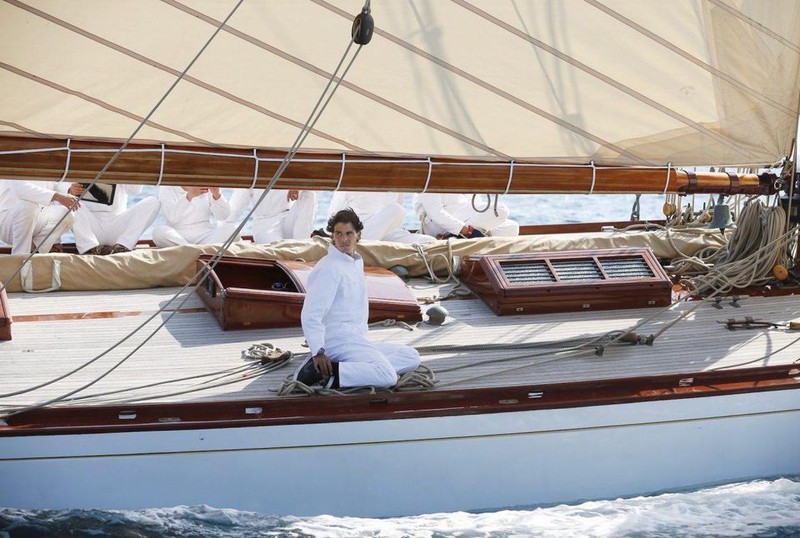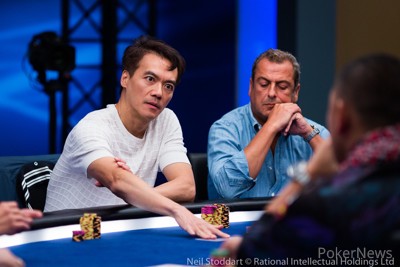Ask any sports fan, when your favorite team trails in a match, the pressure can make your heart skip a beat.
That’s certainly the case for me when I watched Rafael Nadal battling against Roger Federer at the 2008 Wimbledon final, or the marathon matches against Novak Djokovic in 2012 Australian Open and this year’s Wimbledon, to name a few.
But imagine yourself as the player on court, maintaining that level of intensity for two weeks depending on how deep you can make it through a tournament, the ability to unwind and regroup become all the more critical.
Which is why when I met the world’s best players at events such as the Lotte New York Palace Badminton Tournament, the press conference at ASICS, and Citi Taste of Tennis before the US Open, I asked: How do you unwind?
Their answers are notably different.

For Australian player Nick Krygios, video games certainly top his list.
"Playstation is my number one essential; I bring it everywhere I go. That’s kind of what I do off the court: I just go back to my room and then play computer games—like FIFA, FIFA 4G, Fortnite, that sort of stuff."
Another athlete who enjoys FIFA is Alexander “Sascha” Zverev. Unlike Krygios, who can play online for “hours on end,” the world number four generally plays in a group that includes brother Mischa. And while he also likes playing cards and talking about basketball, Sascha’s favorite activity is sleep. “I’m a long sleeper,” said the player who usually tries to get at least 12 hours of shut-eye a day.
Then, there are the more artistic athletes like Kevin Anderson and Gael Monfils, who share a passion in music. For the past few years, Anderson has been playing the guitar and finds it “really relaxing.” Although the practice can be challenging, it's also why the Wimbledon-and-US Open finalist likes it so much.
Monfils, on the other hand, prefers to express his interest more creatively—“making beats” and “creating sounds” primarily on his computer. To both players, the beauty of music lies in removing them from tennis, something Monfils described as like being transported to “another planet.”

Perhaps those with the most different opinions are Simona Halep and Novak Djokovic. While in New York, Halep likes to walk on the street, seeing many people and “taking [in] the energy.” By contrast, the 13-time Grand Slam champion unwinds “in a dark room—no lights, shutting down all the devices, breathing, relaxing with the music, meditating—just having that time to disconnect so I can connect better,” he said.
Evidently, the idea of relaxation varies for many people, but generally speaking, is there a particular activity that’s better for reaching peak performance?
Dr. Mark Kovacs—a performance physiologist, CEO of the Kovacs Institute and co-editor of the United States Tennis Association book titled Mental Skills and Drills Handbook—believes that it all depends on the individual’s arousal level. (This pertains to how ready a person is to perform appropriate tasks in a timely and effective manner.)
The perfect activity depends on a number of things. Are you more type-A, which is often linked with a preference for higher arousal level—ambitious, more aggressive, doesn’t mind confrontation? Or are you more type-B, which is more thought-process oriented with lower arousal level, and takes time mulling over things?
When tennis players’ arousal levels become too high, they’re normally spotted losing it on court, breaking rackets for instance. Therefore, at its core, “relaxation is about reducing excessive arousal level so you can handle stress better,” he said.
Another factor to consider is if you’re an extrovert or introvert: Do you function better feeding off other people’s energy or would you rather spend time alone?
Given there could be any combination from a type-A introvert to a type-B extrovert, the options are abundant. This is why in the world of sports coaching and counseling, Kovacs never takes a cookie-cutter approach, as the result can often be more detrimental than you’d expect.
Now, the performance expert may not have specified any particular activity as better than others, he cautioned me about video games. The popular pastime among athletes (and non-athletes) pose some obvious disadvantages such as causing eyestrain and less sleep. Therefore, to help people with this habit, Kovacs often suggests setting video game curfews (two hours maximum per day) and stopping at 10:30pm so there’s enough time to unwind.
As for other activities, the key is to keep the conditions as consistent as possible. For example, when it comes to sleep, there are ways to monitor snooze quality and setting up the room with certain pillows, colors and temperature for the best sleep. Temperature wise, Kovacs recommends colder is generally better, at somewhere between 65 and 72 degrees being the sweet spot.
Having said that, what if your idea of relaxation isn’t an activity at all?
Like many athletes, Mischa Zverev respects his downtime routine—“getting treatment in the evening, staying home watching some TV, playing PlayStation, hanging out with Sascha”—but what seems especially important to him is great company.
To the world number 43, one of the key components to relaxation is being around people he holds dear—either family or friends. After all, athletes are often on the road, so that sense of familiarity can curb homesickness. The result is having this ability “to feel comfortable and relaxed so you’re ready to be on the court and be aggressive [again],” he said.
This is an interesting point to Kovacs. Although the world sees these single players pursuing a solo sport, their lives outside the court are very much about the team. At any given time, a player can be surrounded by at least three to 15 people—coach or coaches, parents, strength and conditioning coach, physiotherapist, agent, PR representative—so it’s up to the coach or parents to establish a nurturing environment.
Comments